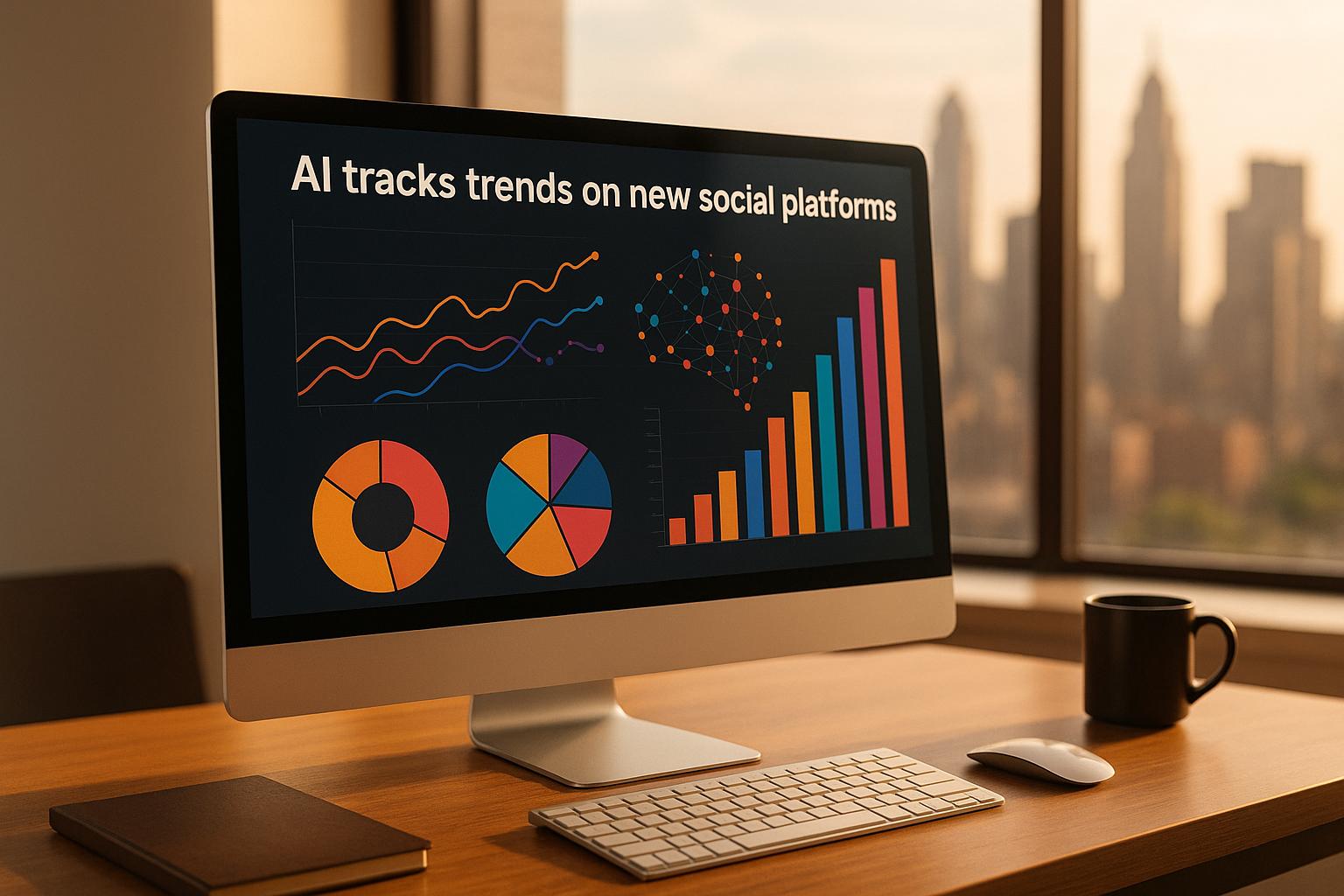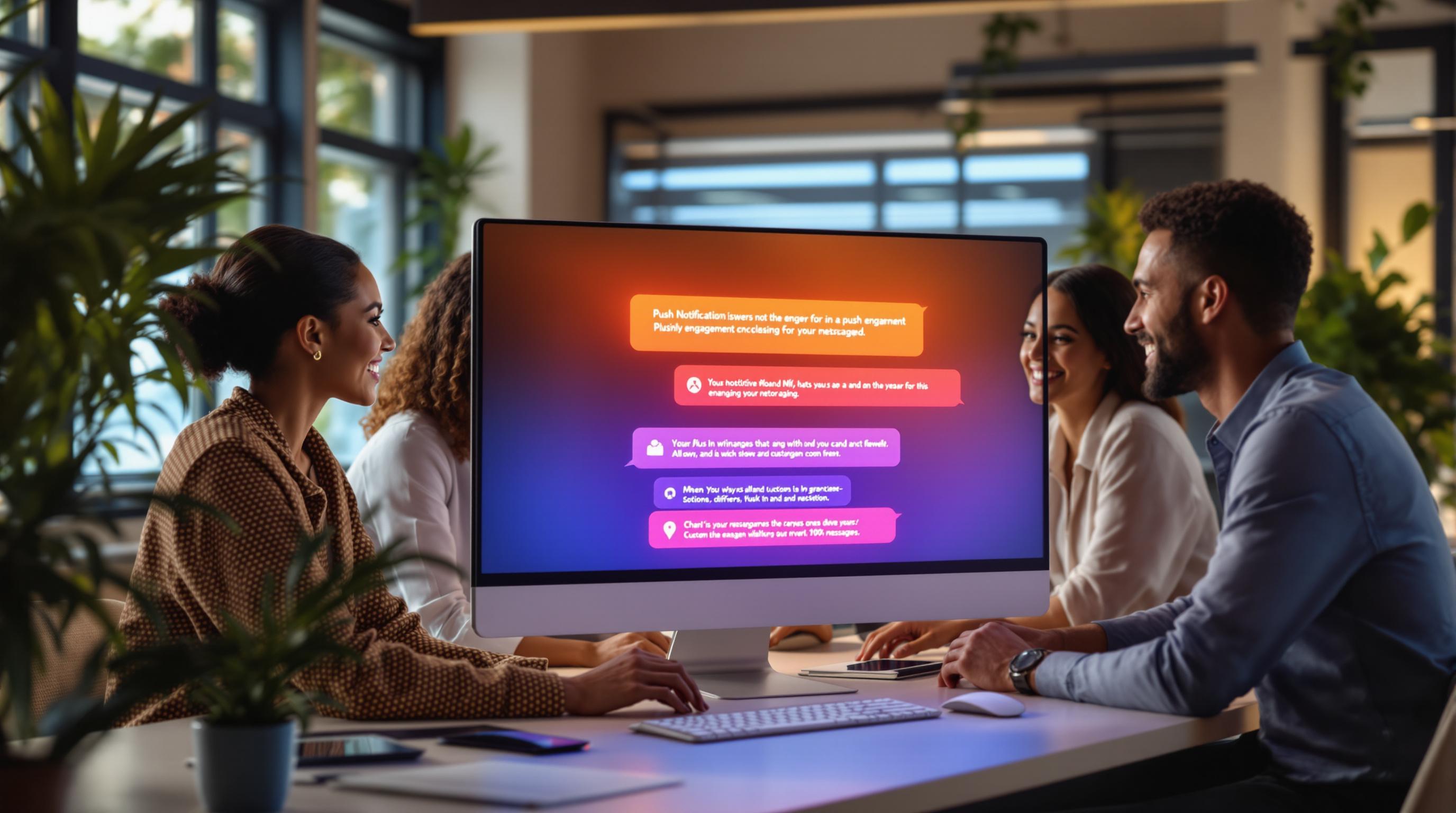AI-powered push notifications are transforming how businesses engage with users. Here's why they matter:
- Higher Engagement: Open rates can increase by up to 800% with personalized, timely messages.
- Industry Success:
- E-commerce: 50% more repeat visits with tailored product suggestions.
- Banking: 36% better lead conversion via smart alerts.
- Entertainment: 25% higher engagement from optimized content.
- Hospitality: 44% improved delivery rates with context-aware messages.
- Proven Results: Spotify boosted engagement 4x with personalized music recommendations. Axis Bank re-engaged 20% of users abandoning loan applications.
Key Takeaways:
- AI uses behavioral data, predictive timing, and dynamic content to improve notifications.
- It reduces user fatigue with frequency capping and privacy-focused personalization.
- Small businesses can now leverage affordable tools like NotifyGenie AI.
AI notifications deliver measurable outcomes - higher click-through rates, better retention, and increased sales. Start small, track metrics, and scale as you see results.
Segari Automates Personalization Of Push Notification Campaigns With MoEngage

Case Studies: Results and Impact
Here are some compelling examples of how AI is reshaping push notifications:
These examples showcase how businesses across industries have achieved measurable ROI by integrating AI into their notification strategies.
Spotify: Music Recommendation System
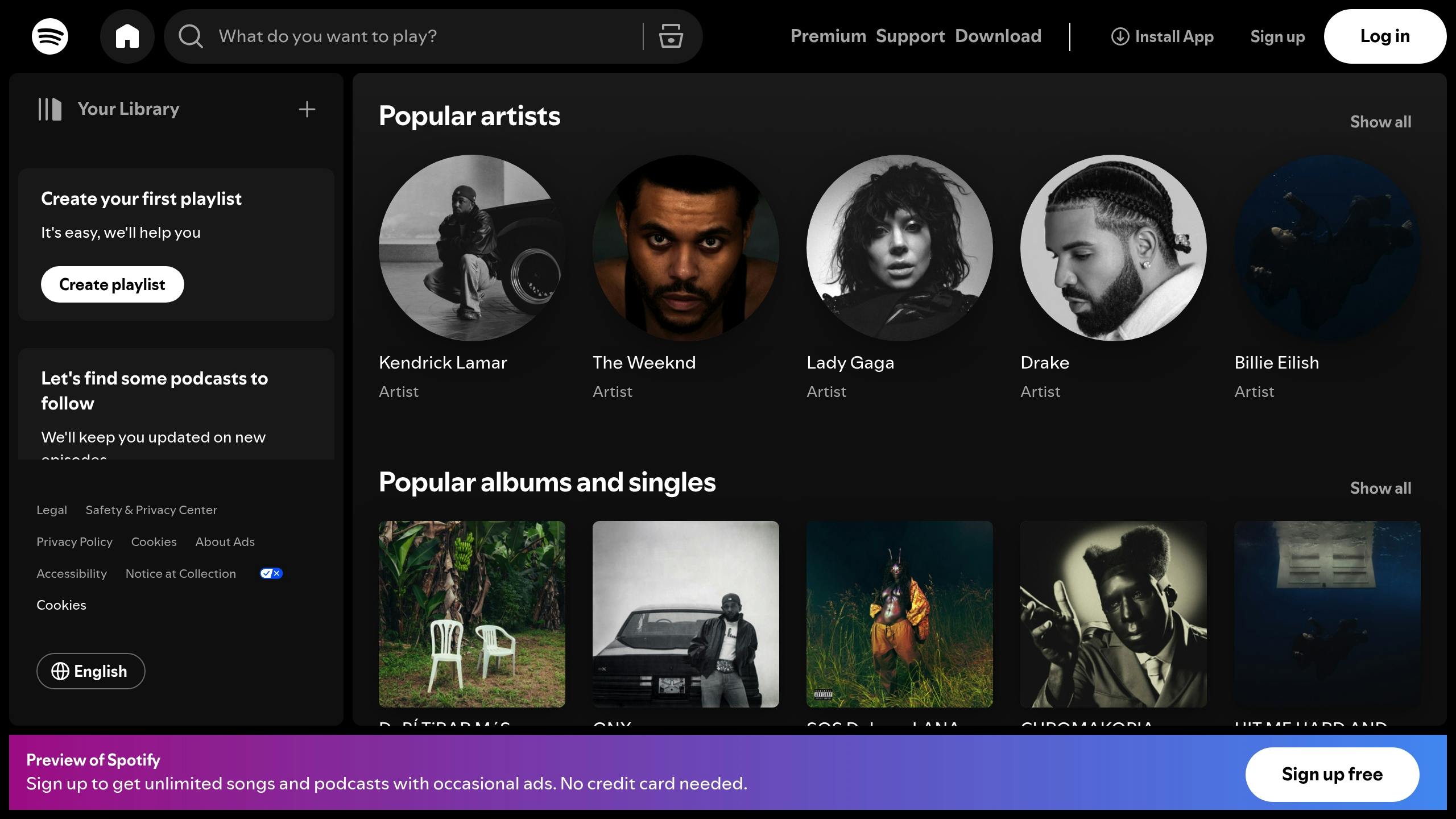
Spotify revolutionized music discovery by leveraging AI-powered push notifications. By analyzing users' listening habits, they delivered personalized playlists tailored to individual preferences. Here's what they achieved:
- 4x increase in user engagement compared to traditional notifications
- 28% rise in monthly discovery of new artists
- Click-through rates consistently outperformed industry averages [1][2]
Although the process required significant data integration, the results in user engagement made the investment worthwhile [2].
Beyond the Rack: Time-Based Offers
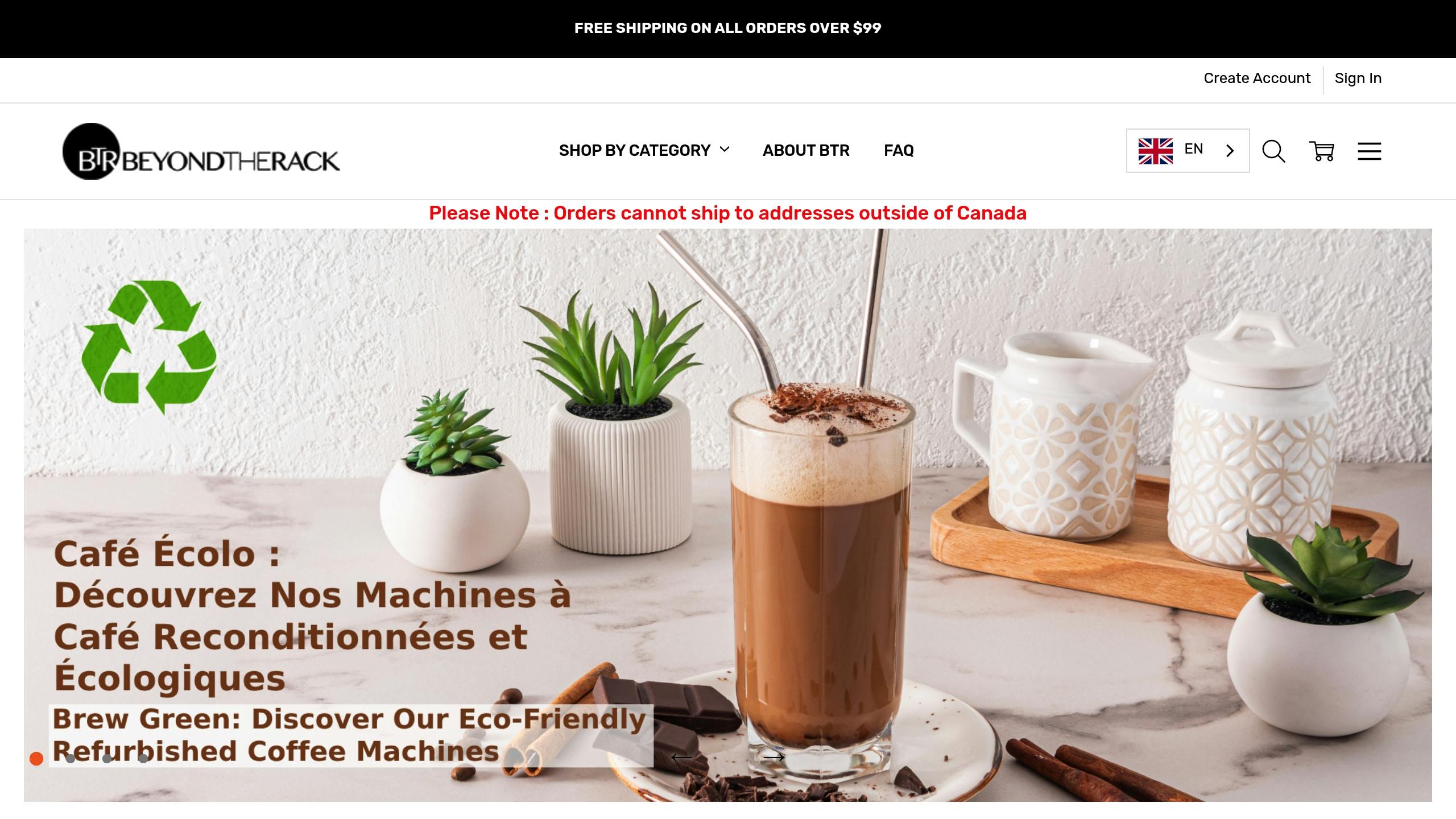
Beyond the Rack, an online retailer catering to 14 million customers, revamped their promotional strategy by replacing standard 48-hour email offers with AI-driven, real-time push notifications. Within three months, they saw:
| Metric | Improvement |
|---|---|
| Time on Site | 72% longer |
| User Engagement | Sustained increase |
AI allowed the company to time offers based on individual user behavior, leading to these impressive outcomes [3].
Axis Bank: Smart Loan Offers
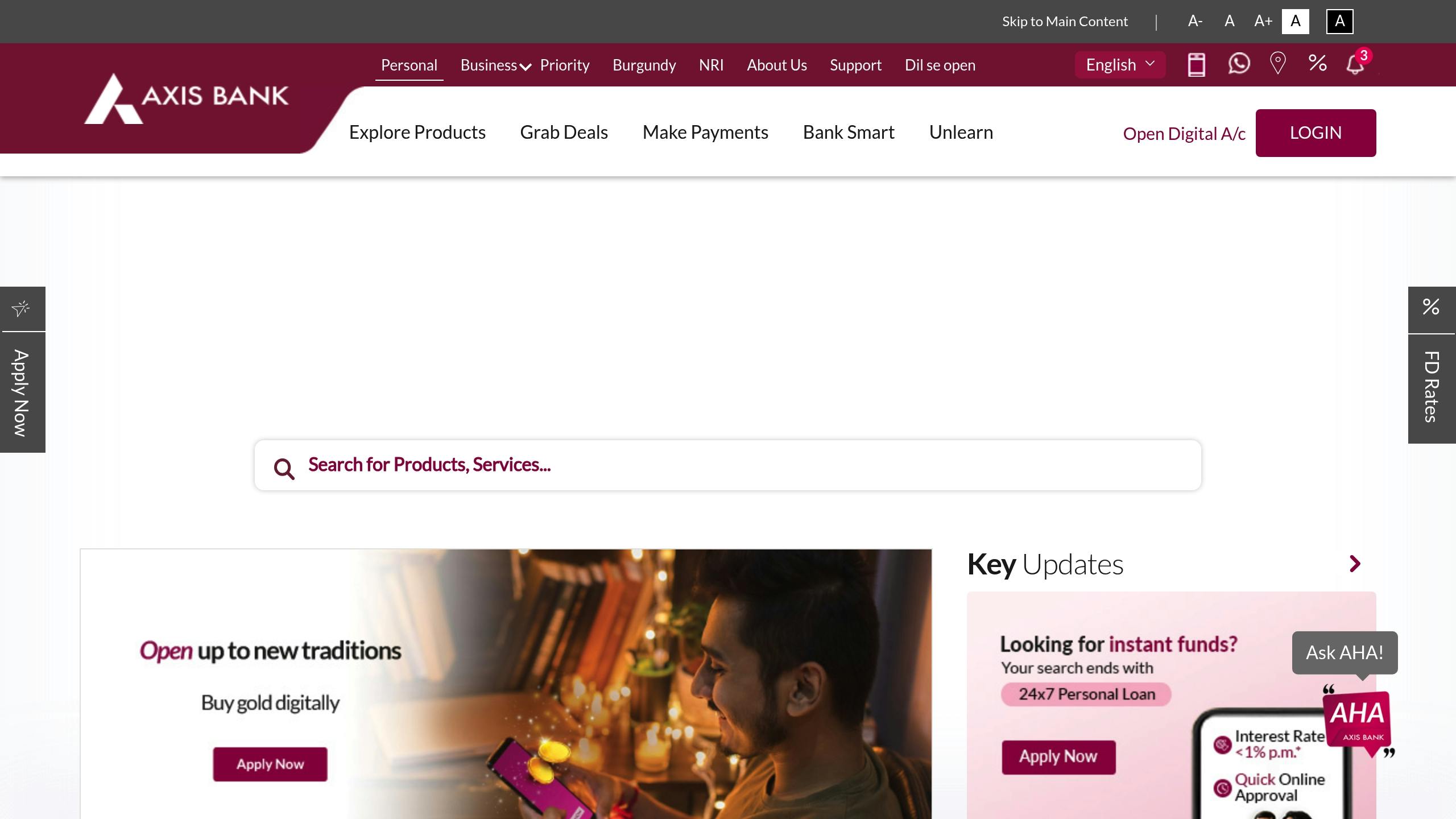
Axis Bank adopted a three-part strategy to optimize customer engagement through AI notifications. Their approach included:
- Micro-segmented notifications tailored to user interests, leveraging behavioral pattern analysis
- Dynamic triggers for users who abandoned loan applications
- Privacy-focused personalization using anonymized financial data
The results were striking:
"By implementing AI-driven notifications, we successfully re-engaged 20% of users who had previously abandoned our web pages. Additionally, we maintained a 23% sustained website engagement rate, significantly above industry standards." [3]
Measuring AI Push Notification Success
User Engagement Results
The numbers speak for themselves when it comes to AI-driven notifications. For example, behavioral-triggered notifications have been shown to cut opt-outs by 53% and extend re-engagement windows to 72 hours, according to Localytics. Let’s break down the key metrics:
| Engagement Metric | Improvement with AI |
|---|---|
| Open Rates | 800% increase |
| Click-through Rate | 4x higher |
| Notification Opt-outs | 53% reduction |
| Re-engagement Window | 72-hour optimal period |
Customer Retention and Sales
The connection between AI notifications and business growth is clear. Axis Bank, for instance, achieved a 20% re-engagement rate, while Spotify continues to lead with strong click-through rates. Urban Airship’s data highlights a 35% boost in sales conversions from abandoned cart recovery notifications [1].
The financial benefits are equally impressive:
- 49% higher average order values from AI-driven product recommendations [1]
- 18% year-over-year revenue growth using machine learning restock alerts (fashion retailer) [1]
- 22% increase in order frequency with well-timed promotional messages (food delivery) [4]
These results underline how AI notifications go beyond just grabbing attention - they deliver real business value. By combining personalization, precise timing, and predictive analytics, AI systems are reshaping how brands engage with their users.
sbb-itb-bec6a7e
Common Problems and Solutions
The case studies highlight success, but businesses often face two major hurdles: user fatigue and maintaining data privacy.
Preventing User Burnout
Push notification fatigue is a growing issue. Studies show that too many notifications - or ones that aren’t relevant - can cause users to uninstall apps or disengage entirely.
How can businesses tackle this? Here are some strategies that have shown measurable results:
| Strategy | Impact |
|---|---|
| AI Frequency Capping | Cuts notification volume by 40% |
| Time-zone Based Delivery | Boosts engagement rates by 60% |
| Behavioral Triggers | Improves engagement by 23% |
Meeting Data Privacy Standards
As AI notifications become more advanced, staying privacy-compliant is essential. Spotify offers a great example: their music recommendation system protects user privacy by relying on anonymized listening data [2].
Key practices for privacy compliance include:
- Using minimal data necessary for personalization
- Gaining clear user consent
- Storing data securely with encryption
Axis Bank showcases how privacy-conscious personalization can still drive results. Their strategy involves using only pre-approved financial interest data, which keeps them compliant while boosting user engagement [3].
These approaches help businesses balance effective AI notifications with the need for privacy, making these tools more accessible even for smaller organizations through specialized platforms.
AI Tools for Small Businesses
AI notification tools are no longer just for big companies. Now, small businesses can take advantage of these tools at a much lower cost. According to Business of Apps, this is especially helpful for the 68% of SMEs that don’t have dedicated technical teams [1].
NotifyGenie AI
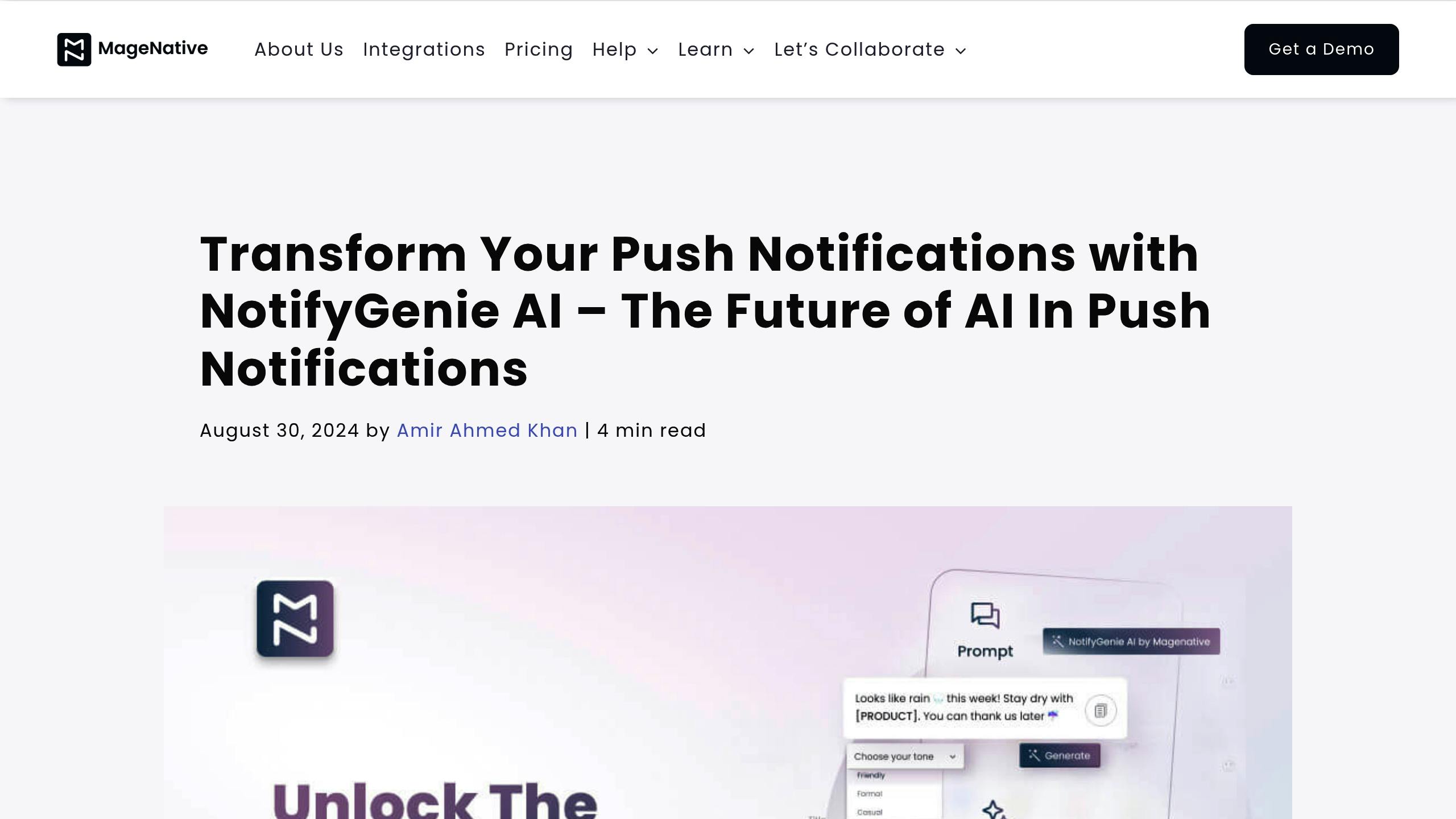
NotifyGenie AI makes advanced push notification management accessible to small businesses. Its standout feature is a hyper-personalization engine that tailors notifications to individual users.
NotifyGenie offers a usage-based pricing model at $0.01 per notification. For a business sending 15,000 notifications per month, this works out to $150 - around 25% less than traditional platforms. This kind of cost efficiency mirrors strategies used by larger enterprises, like Axis Bank [1].
AI for Businesses
AI for Businesses is a directory designed to help SMEs find the right AI tools. It features a curated list of push notification platforms and other automation tools. Their Pro plan, priced at $29/month, includes:
- Shopify integrations
- Performance analytics
- Compatibility with popular platforms
MarketingTech analysts highlight that these kinds of specialized tools work best for businesses with user bases under 500,000, offering better personalization. For example, dedicated systems show 30% click-through rates, compared to 18% for general-purpose tools [2].
For businesses focused on privacy, these platforms come with built-in features like:
- Automatic consent management
- Data minimization protocols [1]
These privacy measures not only protect user data but also help achieve better results while staying compliant with strict privacy standards [3].
Summary and Next Steps
The case studies highlight how AI-powered notifications can enhance business performance through better personalization and timing. Here's how you can achieve similar results:
Define Clear Objectives and Use Data Wisely
Start by reviewing your current notification performance. For instance, if your open rates are below 15%, there's plenty of room to improve [1]. Use behavioral data, such as purchase history and app usage, to enable AI-driven personalization.
Set Up Smart Controls
Avoid overwhelming users with too many notifications by implementing these safeguards:
- Frequency caps (e.g., limit to 3 notifications per week)
- User preference centers
- Relevance thresholds (ensure 85%+ predicted interest)
Track Important Metrics
Keep an eye on these key indicators to measure success:
- Engagement rates: Aim for the industry benchmark of 23% for segmented campaigns [3].
- Sales conversions: Expect an average lift of 35% [1].
- User retention: Target a 23% boost in retention rates [1].
The numbers show that well-executed AI-powered notifications can improve customer engagement while respecting user preferences. Start small with A/B-tested templates from tools like NotifyGenie AI, and then scale up to full automation.
